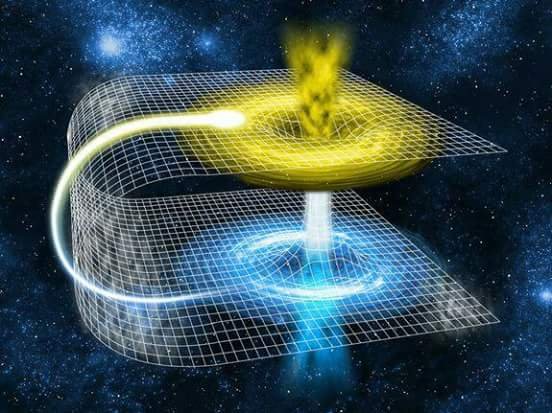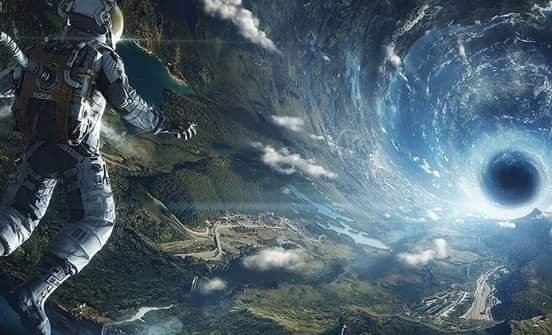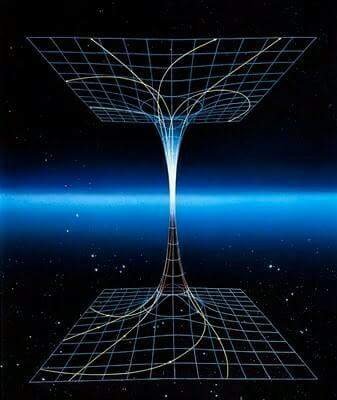
Wormhole is a theoretical corridor in space-time that can create shortcuts for long journeys through the universe. The worm holes were predicted by general relativity. But be careful: worm holes bring dangers with them and include those sudden collapse, high radiation and dangerous contact with strange material.
Wormhole Theory
In 1935, physicists Albert Einstein and Nathan Rosen used the theory of general relativity to propose the existence of "bridges" in the spacetime fabric. These tracks are known as Einstein-Rosen bridges or worm holes. These holes reach two different points in space-time, theoretically creating a shortcut that can reduce both travel time and distance.

The worm holes contain mouths, with a fissure reaching the elbows together. The mouths are likely to be spherical, and the larynx may be straight, but it can bend, leading to a longer path than traditional methods. The general theory of mathematical relativity predicts the existence of worm holes, but no one has yet discovered the presence of these holes. The negative mass of a duddy hole may be captured in the same way as its attractiveness affects the light through which it passes.

Specific solutions to general relativity allow for worm holes where each side of the wormhole is a black hole. However, the black holes are naturally shaped by the collapse of a dead star and do not by themselves create a dorsal hole.
Within the wormhole (Through Wormhole)
Science fiction is full of stories that talk about traveling through time using worm holes. But the reality of this travel is more complicated. The reason is that we did not see only a vertical hole. The first problem is size. Early worm holes were observed at microscopic levels, ie, at dimensions up to 10 ^ 33 cm. In any case, the universe expands and someday some of these worm holes can extend to larger sizes.
Another problem arises from stability. The worm holes, predicted by Rosen-Einstein, would be useless for travel because they would collapse rapidly. But a very recent research has found that a dormant hole contains a "strange" substance that can remain open and unchanged for longer periods of time. Exotic Matter, which must be observed not to be confused with Dark Matter or Antimatter, has a negative energy density and a large amount of negative pressure. This material was observed in the behavior of a certain type of vacuum and is part of Quantum Field Theory.
If a dorsal hole contains an adequate amount of foreign material that may be naturally produced or artificially added, the wormhole can theoretically be used as a method of transmitting information or traveling through space. The worm holes may not connect only two separate regions of the universe, but can also connect two different cones. Similarly, some scientists believed that if a wormhole operator moved according to a particular situation, it could thus allow travel over time. However, British cosmologist Stephen Hawking argued that this was impossible.
Although the addition of the exotic material to the hole of the boiler makes it stable to a degree that allows the human traveler to travel safely through it, there is still the possibility that the addition of a "systemic" may lead to significant instability in this corridor. Even if worm holes can be found, today's techniques are not enough to enlarge or stabilize them. In any case, scientists continue to explore this concept as a way to travel through space, hoping that technology will eventually be able to benefit from those holes.

